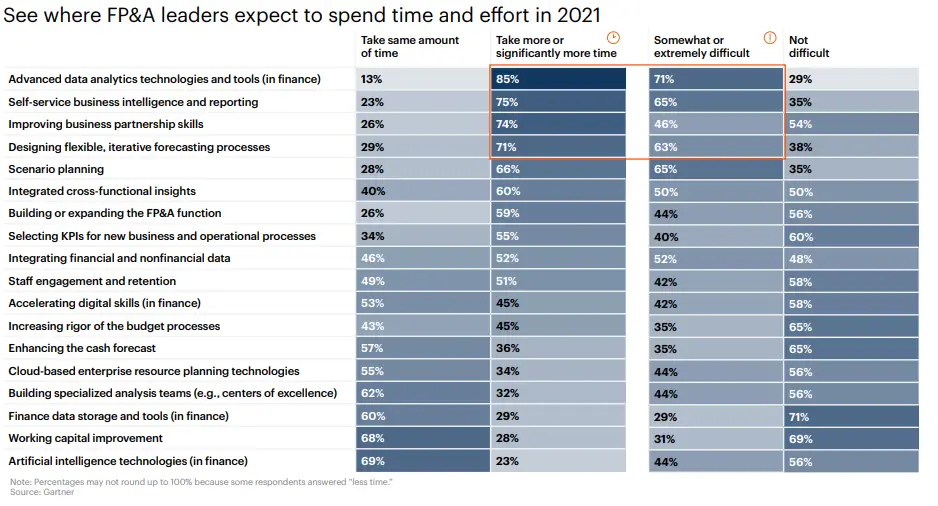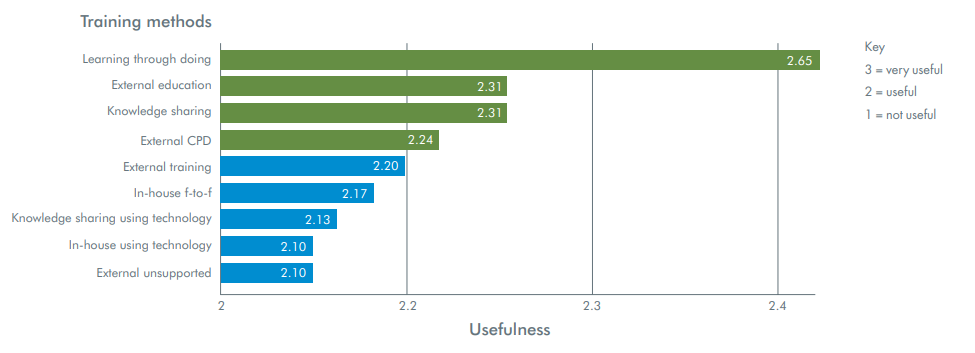Finance is one of the most critical departments in any organization. Without skilled finance professionals, a business cannot manage compliance, ensure stability, or drive growth in today’s highly competitive environment. Yet, the finance workforce is under constant pressure from rapid technological change, shifting regulatory policies, and evolving customer expectations.
While many organizations invest heavily in new technologies such as automation, analytics, and AI, they often overlook an equally important aspect: the learning and development (L&D) of their finance teams. Without an effective L&D strategy, businesses cannot maximize the value of these investments or prepare employees for the challenges ahead.
According to Statista, the average annual L&D expenditure per employee was $1,308 in 2022. Yet, there remains a significant gap between employee learning needs and what organizations deliver. Time constraints, cost barriers, and lack of managerial prioritization continue to hold finance teams back.
This guide explores why finance professionals need structured L&D, the best methods to deliver it, and how to create an agile, future-ready program that drives both business performance and employee growth.
Why Do Finance Professionals Need an L&D Program?
The finance function is evolving rapidly, and training is no longer limited to compliance modules. Today’s finance professionals require continuous upskilling in both technical and soft skills.
Keeping Pace with Regulatory Change
Banking and finance operate in one of the most heavily regulated environments. Continuous training ensures employees stay compliant with evolving policies, protecting the organization from risks and penalties.
Reskilling and Upskilling for Digital Finance
Traditional compliance training is no longer enough. With digital transformation reshaping finance, professionals need new capabilities to manage advanced systems, data-driven reporting, and strategic planning.
Explore iMocha’s upskilling and reskilling platform to keep your finance workforce ahead of emerging skill needs.
The Skills Finance Teams Need in 2025
Technical Skills
A Gartner study revealed that 69% of finance directors accelerated digital initiatives during the pandemic. Finance leaders are now prioritizing investments in:
- Artificial intelligence (AI)
- Robotic process automation (RPA)
- Machine learning (ML)
- Advanced data analytics
Finance analysts, for example, must acquire strong data literacy skills to extract and interpret financial data accurately. Without this, decision-making becomes guesswork rather than insight-driven strategy.

Soft Skills
Automation will take over many repetitive finance tasks, but human skills will remain irreplaceable. Key soft skills include:
- Problem-solving: Identifying issues and creating solutions that align with business objectives.
- Communication: Explaining financial insights clearly to non-financial stakeholders.
- Creativity: Leveraging technology as a tool while generating innovative business ideas.
With hybrid and remote teams becoming the norm, collaboration and empathy are also vital for success.
Types of L&D Methods for Finance Professionals
The Chartered Global Management Accountant (CGMA) found that experiential learning—or “learning by doing”—is the most effective method for finance teams. However, modern programs benefit from blending traditional, digital, and innovative approaches.
1. Learning Through Doing
Experiential learning is hands-on and encourages employees to learn by solving real-world challenges. Methods include:
- Secondments: Temporary assignments to other teams or even partner companies to broaden exposure.
- Colocation: Team members working together in the same physical location to enhance collaboration.
- Job Rotation: Rotating employees through different roles to build business acumen and prepare them for leadership positions.
- Mentorship: Pairing senior finance professionals with junior staff for coaching and guidance.
2. External Training Courses
Short courses designed by external vendors can build niche skills quickly and effectively. These work especially well for non-core skills or specialized certifications.
3. Continuing Professional Development (CPD)
Some organizations support advanced education such as MBAs or finance certifications. While resource-intensive, CPD helps develop junior professionals into future-ready leaders.
4. In-House Training
Organizations can reduce costs by bringing training in-house. This includes:
- Face-to-face seminars: Traditional classroom sessions led by experts.
- Blended learning: A combination of in-person and online learning modules for flexibility.
- Peer-to-peer (P2P) learning: Employee-led workshops to encourage knowledge-sharing across teams.
(Tip: iMocha can support in-house L&D with customizable skill assessments and role-based learning paths, helping HR teams identify gaps and build targeted training programs.)

Tips for Creating the Best L&D Program for Finance Teams
1. Conduct Employee Surveys
Surveys reveal the actual learning needs of finance staff and help set program goals. They also make employees feel valued and increase buy-in. Yet, only 31% of organizations use surveys effectively, according to Willis Towers Watson.
2. Modernize with Flexible Learning
Mobile learning, microlearning, and bite-sized modules improve accessibility and engagement. Combining traditional methods with digital formats ensures employees get both depth and flexibility in their training.
3. Focus on Customer Experience
Finance roles often involve client-facing responsibilities. Training should emphasize proactive customer service and communication skills. According to HubSpot, companies that excel at customer service can boost revenue by 4–8%.
4. Foster an Agile Learning Culture
An L&D program should not be static. With regulations and technologies changing constantly, organizations must refresh and adapt their programs regularly. Yet, 59% of organizations cite culture as a barrier to agility, according to KPMG. Leadership must encourage experimentation and continuous learning.
Discover the 16 best learning and development tools that can elevate skill readiness for any workforce.
How iMocha Can Help Finance Teams Upskill
Building a future-ready finance workforce requires more than ad hoc training. It needs data-driven insights and measurable progress tracking. iMocha enables organizations to:
- Conduct skills gap analysis to identify technical and soft skill gaps.
- Create role-based learning paths tailored to financial analysts, compliance officers, and CFO office teams.
- Use AI-powered skills assessments to measure progress, benchmark against industry standards, and prove ROI.
With iMocha, organizations can align their L&D strategy with business goals while ensuring employees remain compliant, digitally savvy, and customer-focused.
Conclusion
In today’s business landscape, finance professionals are expected to be more than number-crunchers. They must be data-driven decision-makers, compliance guardians, and customer advocates. An effective L&D program equips them with the technical and soft skills needed to thrive in this expanded role.
By blending methods such as experiential learning, mentorship, external courses, and in-house programs with modern, flexible formats, organizations can ensure their finance teams remain future-ready. Tools like iMocha help bridge the skills gap between current capabilities and future requirements, making learning measurable, scalable, and impactful.
Learning and development is not an expense. It is an investment that fuels business resilience and long-term growth. For finance professionals, it is the key to remaining agile and valuable in an increasingly automated and digital-first world.
FAQs
1. What skills should an L&D program for finance professionals focus on?
An effective program should balance technical and soft skills. Key technical skills include data analytics, AI, robotic process automation (RPA), and financial modeling. On the soft skills side, communication, problem-solving, and creativity are essential. Platforms like iMocha help organizations benchmark and track these skills to design tailored learning paths.
2. How can companies measure the ROI of finance L&D programs?
ROI can be measured by tracking improvements in employee productivity, compliance accuracy, reduced financial errors, and customer satisfaction scores. iMocha enables HR and L&D teams to assess skill progression over time with AI-driven analytics that link learning outcomes to business performance.
3. Why are soft skills increasingly important for finance professionals?
With automation handling repetitive finance tasks, employees must focus on problem-solving, customer experience, and strategic decision-making. Soft skills such as communication and collaboration allow finance professionals to complement technology and deliver greater business value.
4. How does iMocha support L&D for finance professionals?
iMocha offers skills gap analysis, role-based assessments, and AI-driven insights to help organizations design targeted L&D programs. It enables companies to measure progress, personalize learning, and ensure finance teams stay compliant and future-ready.


.avif)
.webp)

.webp)


